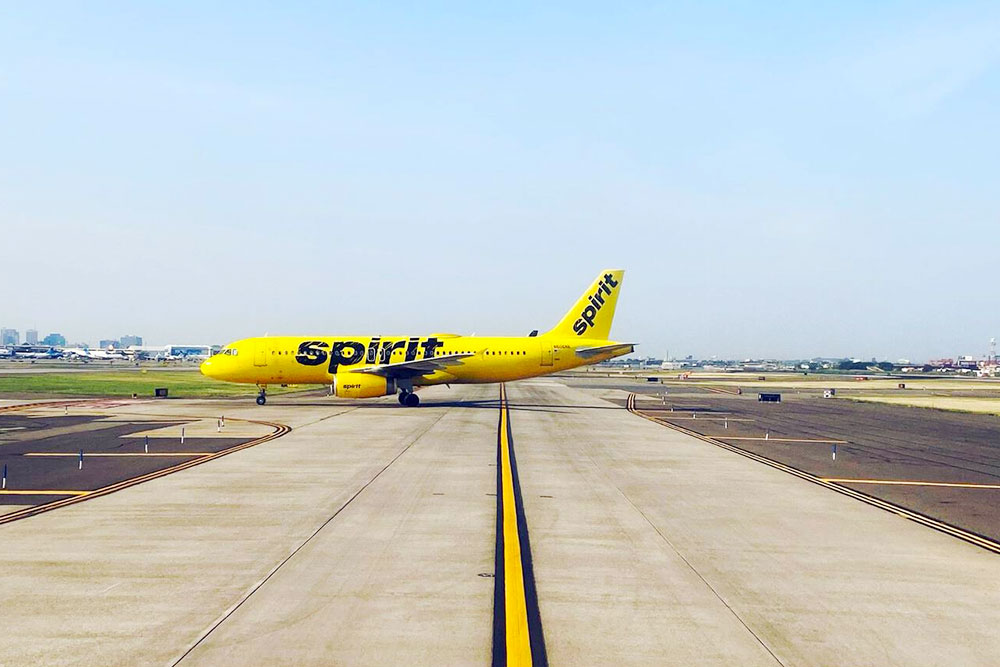Planning a trip to North America can be exciting, but finding an affordable flight is often challenging. With airfare prices fluctuating throughout the year, knowing when to book flights can significantly affect your travel budget.
Understanding the factors influencing flight costs, such as seasonal demand, holidays, and special events, can help you strategize to secure the best deals. This guide will provide insights into the patterns of airfare pricing, helping you identify the optimal times to book your journey to North America.
Cheapest Time to Book Flights to North America in 2025

The cheapest time to fly to North America generally falls within three weeks to two and a half months before your departure date. Airlines are trying to fill seats during this time and may offer discounts to entice travelers.
Here’s a breakdown of the ideal booking window depending on whether your flight is domestic or international:
- Domestic Flights (within North America): Aim to book one to three months in advance.
- International Flights (to North America from elsewhere): Book three to eight months before your trip.
It’s important to note that these are just general guidelines, and flight prices can fluctuate depending on several factors, including:
- Season: Flights are typically more expensive during peak travel seasons, such as summer and holidays.
- Day of the week: Tuesdays, Wednesdays, and Thursdays are generally the cheapest days to fly, while weekends are usually more expensive.
- Time of day: Red-eye flights (late-night departures) are often cheaper than flights during peak travel times.
- Airline: Different airlines have different pricing strategies. Budget airlines are usually the cheapest option but may charge extra fees for checked bags and seat selection.
Cheapest Airlines that Fly to North America with Average Prices

Here are 9 of the cheapest airlines that fly to North America, along with their average prices (based on searches for economy tickets across various destinations in North America):
- Spirit Airlines: Known for its bare-bones approach, Spirit Airlines offers some of the cheapest fares in North America. However, be prepared to pay extra fees for checked bags, seat selection, and even carry-on luggage that doesn’t fit under the seat. Average Price: $50-$150
- Frontier Airlines: Another budget-friendly option, Frontier Airlines offers similar pricing to Spirit. They also have a variety of fees for optional services. Average Price: $70-$180
- Swoop Airlines: This Canadian ultra-low-cost carrier offers flights across Canada, Mexico, the United States, and the Caribbean. Be aware of extra fees for everything except the seat you sit in. Average Price: $60-$170
- JetBlue Airways: JetBlue is a major airline that offers a nice balance between affordability and amenities. They include one checked bag and seat selection in their base fare. Average Price: $100-$220
- Air Canada: Canada’s national airline offers competitive rates, especially when flying within Canada. They generally include a carry-on bag in the base fare. Average Price: $120-$250
- WestJet: Another major Canadian airline, WestJet, offers flights across North America, the Caribbean, and Europe. They are known for their friendly service. Average Price: $130-$280
- United Airlines: A primary US legacy carrier, United offers a vast network of flights across North America and beyond. While not the cheapest option, they often have sales and promotions. Average Price: $150-$300
- American Airlines: Another primary US legacy carrier, American Airlines, offers a similar network and pricing structure to United. Average Price: $150-$300
- Delta Air Lines: The last of the big three US legacy carriers. Delta is known for its reliability and customer service, but it also tends to be a bit more expensive. Average Price: $180-$350
Pros & Cons of Flying to North America During the Cheapest Time

There are advantages and disadvantages to flying to North America during the cheapest times, typically the shoulder seasons (spring and fall) and weekdays. Here’s a breakdown to help you decide:
Pros
- Save Money: The biggest advantage is the significant savings you can achieve on your flight ticket. This frees up more money for other aspects of your trip, like accommodation, activities, or food.
- Fewer Crowds: Popular tourist destinations can get very crowded during peak season. Flying during the off-season means encountering fewer crowds at attractions and potentially shorter lines.
- Pleasant Weather: Depending on the region in North America, shoulder seasons often offer pleasant weather with comfortable temperatures. This can be ideal for sightseeing and outdoor activities.
- More Flexibility with Dates: If you’re not tied to a specific timeframe, flying during the cheapest times allows for more flexibility when booking your trip.
Cons
- Limited Availability: Popular events, attractions, or tours might be limited or closed during the off-season. Research your desired activities beforehand.
- Unpredictable Weather: Shoulder seasons can sometimes experience unpredictable weather patterns. Be prepared for potential rain showers or slightly cooler temperatures.
- Reduced Service: Some restaurants, shops, or transportation options, especially in smaller towns, might have limited hours or be closed during the off-season.
- Fewer Flight Options: Compared to peak season, fewer flight options might be available, potentially leading to more extended layovers or inconvenient travel times.
- Airline Amenities: Budget airlines offering the cheapest fares often have fewer amenities in the base price. Prepare for additional checked bags, seat selection, or in-flight entertainment fees.
Additional Tips for Finding the Best Flight Deals to North America

- Embrace the Power of Incognito Mode: Airlines and travel websites can track your searches and potentially raise prices if you show interest in a specific route. Utilize incognito or private browsing mode to avoid this and potentially see different fare options.
- Weekend Getaways with a Twist: Weekend flights are typically pricier, but consider flying out on a Friday evening and returning on Tuesday or Wednesday. This strategy can sometimes snag you a better deal on the outbound leg, while weekdays are generally cheaper for return flights.
- Consider Error Fares (with Caution): Occasionally, airlines publish fares with significant errors, offering incredibly low prices. The airlines usually honor These “error fares” but be prepared for confirmation or cancellation delays. Search for “error fare alerts” online, but remember to book at your own risk.
- Loyalty Can Be Rewarding (But Strategic): While signing up for frequent flyer programs can be beneficial, don’t spread yourself too thin. Choose programs for airlines you realistically fly the most and consider credit cards that offer miles or points specifically for those airlines.
- Think Outside the Box (Airports): Major hub airports can be expensive. Explore options like secondary airports in your destination city or nearby airports in your departure city. Budget airlines often operate out of these smaller airports, potentially offering lower fares.
- Student Sleuthing: Many airlines offer student discounts. If you’re a student, check the airline’s website or contact them directly to see if you qualify for special offers.
- Weekend Warrior Deals (Accommodation): Flights might be pricier on weekends, but some hotels offer special weekend rates. When considering flying in on a Friday or Saturday, factor in potential hotel savings.
Lastly, we’d love to hear about your experience flying to North America or any travel-saving tips you’d like to share—feel free to leave a comment!
Share this BlogFrequently Asked Questions
It's recommended to book 2-3 months in advance for international flights to North America to secure better prices.
Flights are often cheaper during weekdays (Tuesday to Thursday) compared to weekends, due to lower demand.
Yes, budget airlines can offer significant savings, particularly for domestic flights within North America. However, consider additional fees.
Use flight comparison websites, set fare alerts, be flexible with travel dates, consider nearby airports, and monitor airline sales.











